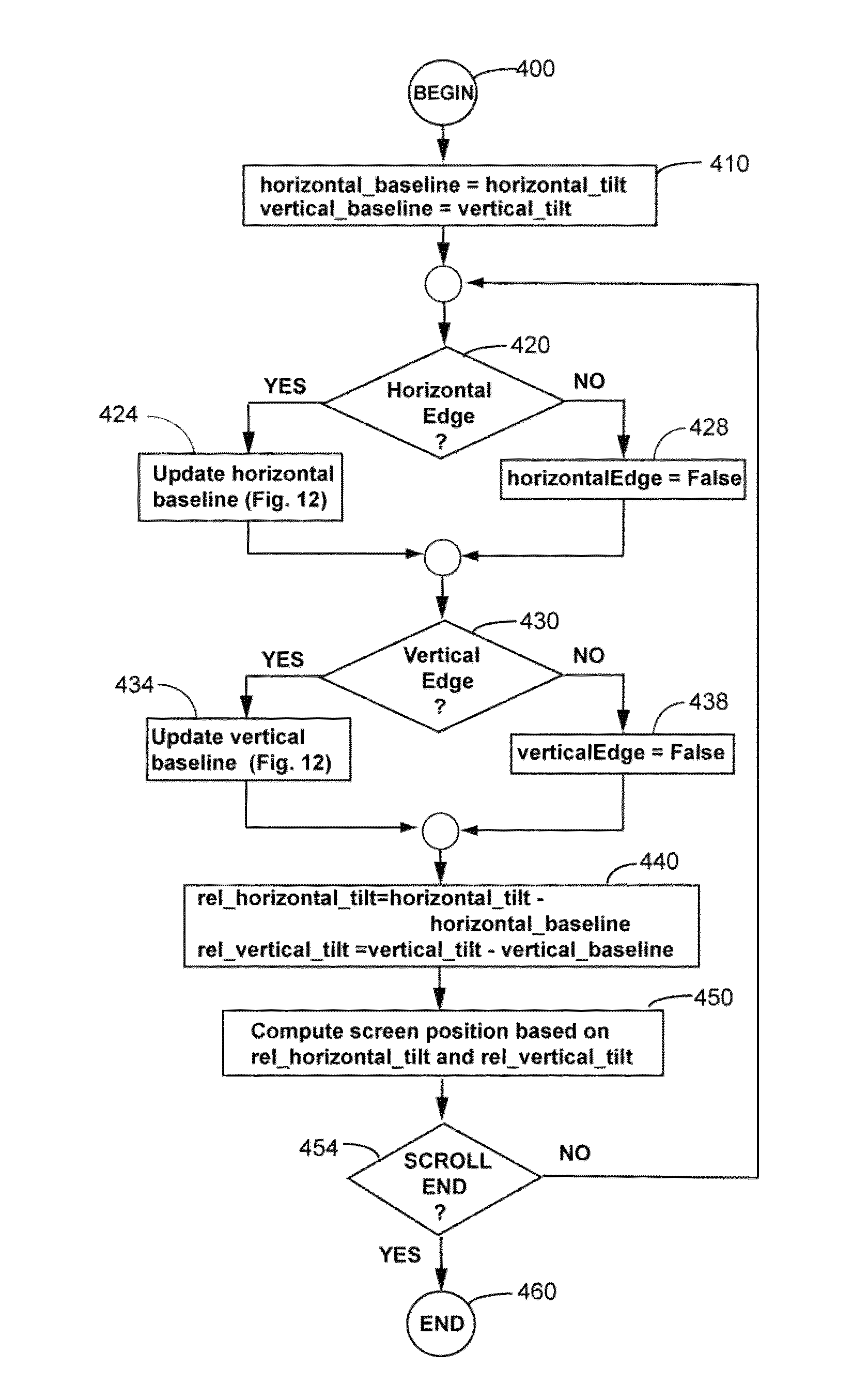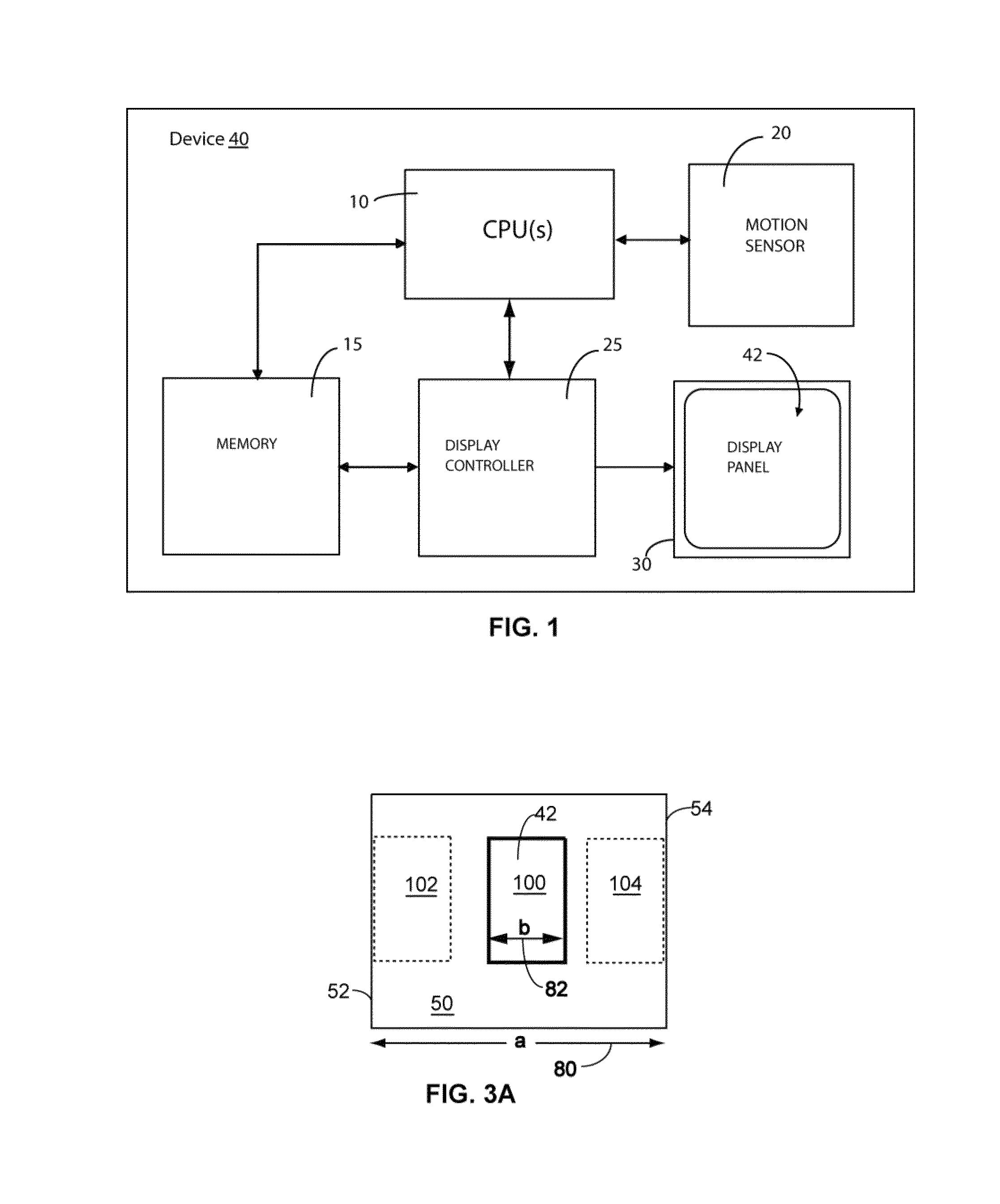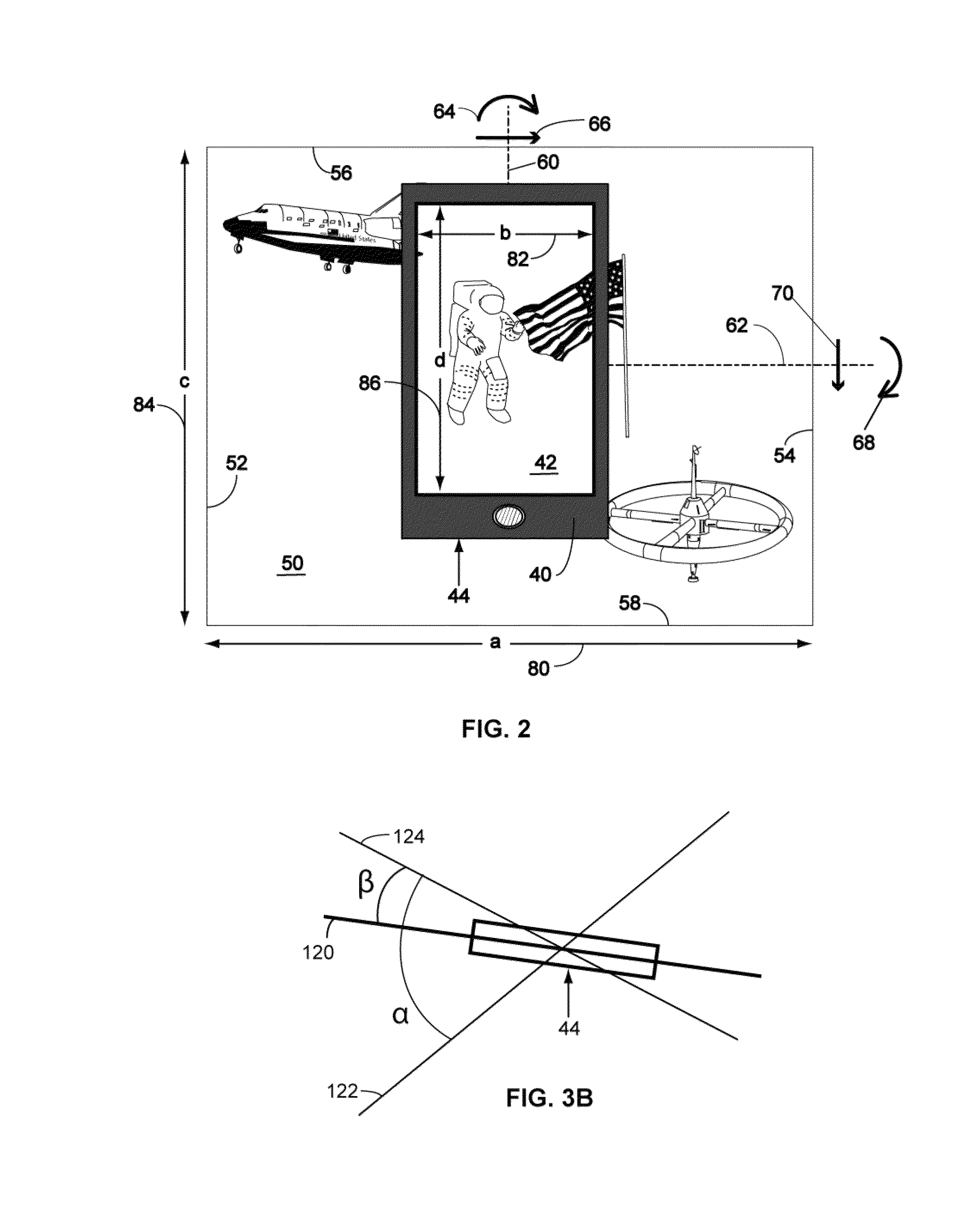Motion-based view scrolling with proportional and dynamic modes
a motion-based view and proportional mode technology, applied in the field of electronic devices, can solve the problems of reducing the quality of image perception and the readability of displayed information, reducing the accuracy of scrolling, and less stable, so as to enhance or replace conventional scrolling methods, reduce the non-responsive range of rotation, and improve the effect of scrolling efficiency and convenien
- Summary
- Abstract
- Description
- Claims
- Application Information
AI Technical Summary
Benefits of technology
Problems solved by technology
Method used
Image
Examples
Embodiment Construction
[0045]Hand held electronic devices typically have small screens and often need to show information contents that are larger than the size of their displays. They employ a contents view (also called “virtual display”) which is stored in the device memory, while a part of the virtual display is shown in the screen view (also called “physical display”). In many systems, the contents view may be dynamically downloaded to the device (e.g. from the internet or externally connected devices) so that at various times only a part of the contents view is actually stored in the device. In other situations, the contents may be programmatically updated or selectively loaded from local memory causing the contents view to change. The operator of the electronic device must be able to scroll the screen view over the contents view. It is important that the screen view navigation will be intuitive and easy to use.
[0046]FIG. 1 discloses an electronic device 40 in accordance to some embodiment of the pre...
PUM
 Login to View More
Login to View More Abstract
Description
Claims
Application Information
 Login to View More
Login to View More - R&D
- Intellectual Property
- Life Sciences
- Materials
- Tech Scout
- Unparalleled Data Quality
- Higher Quality Content
- 60% Fewer Hallucinations
Browse by: Latest US Patents, China's latest patents, Technical Efficacy Thesaurus, Application Domain, Technology Topic, Popular Technical Reports.
© 2025 PatSnap. All rights reserved.Legal|Privacy policy|Modern Slavery Act Transparency Statement|Sitemap|About US| Contact US: help@patsnap.com



